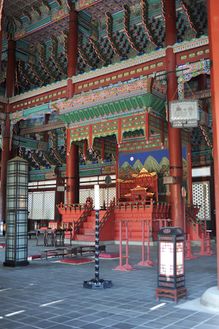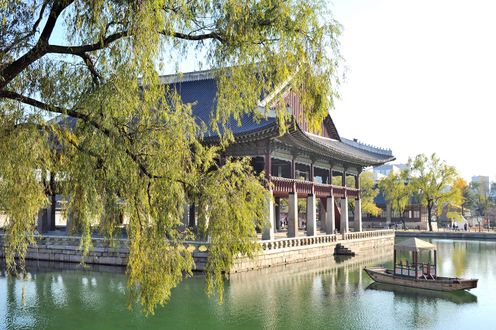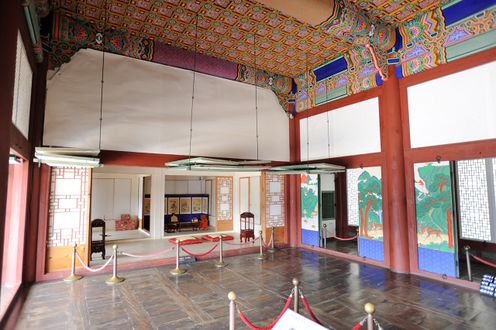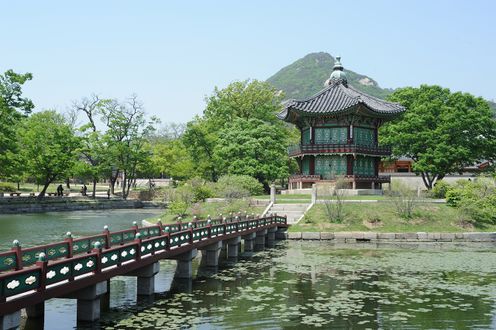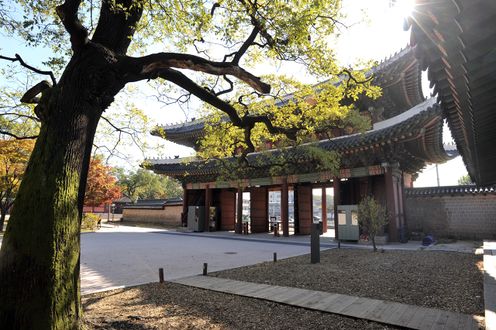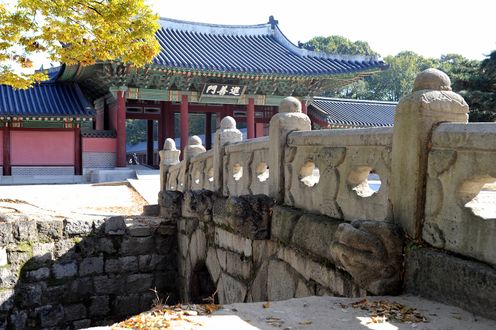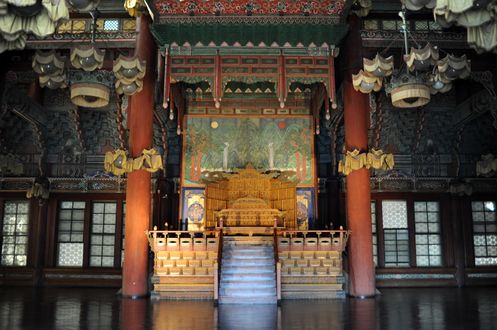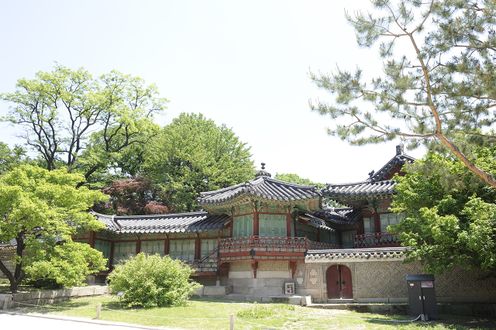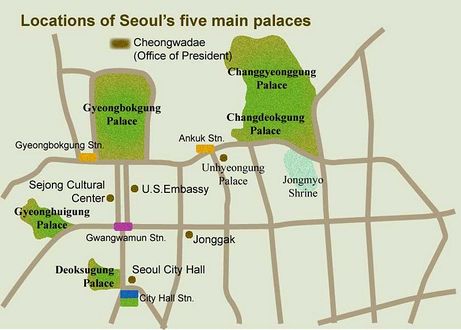Understanding the Design and Function of Joseon's Royal Palaces
In Korean, the term "palace" – gung – can refer to an official palace complex, secondary palace complex, travel palace, and residential palaces of the extended royal family. Smaller "palaces" for various royal family members were also located within the large official and secondary palace complexes.
The first palace built within Joseon’s capital, Hanyang, was Gyeongbokgung. It was called the "official" palace because it contained the "required" six palaces for the king, the queen, the queen dowager, the prince, the princess, and the king’s concubine(s). However, Gyeongbokgung was considered inauspicious and was left in ruins for 250 years after the Japanese invasions of 1592-1598. In the 1860s, Gyeongbokgung was rebuilt by Heungseon Daewongun, the father of and regent to King Gojong, as a means to symbolically reclaim royal authority. But King Gojong did not live there long. In 1897, he moved to Gyeongungung Palace, a former residential palace, and made this the imperial palace of the Korean Empire. This palace was renamed Deoksugung and Western-style buildings were constructed alongside Korean ones.
Throughout the Joseon Dynasty, the royal family preferred the "Eastern Palace Complex” – Changdeokgung and Changgyeonggung, together – because it was considered more auspicious, provided enough room for the royal family, and followed a layout that better suited the Korean aesthetic and harmonized with the environment.
An example of a residential palace remaining today is Unhyeongung, where King Gojong was born. Travel palaces, located in the provincial capital fortresses, were all destroyed during the Japanese colonial period. But some, such as the one in Hwaseong Fortress and Namhansanseong Fortress, have been recently restored.
Large palace complexes contain three sections: outer quarters, inner quarters, and administrative quarters. The outer quarters were where meetings, rituals, and ceremonies were held. Three gates, including the main palace gate, must be passed through to arrive at the main throne hall where important events were held. Behind or next to the main throne hall is a smaller throne hall where the king would have his daily meetings with top officials. The inner quarters were where the royal family lived, with separate spaces for the king, queen, queen dowager, prince, princess, and concubine(s). The administrative quarters were where the royal staff and government officials lived and worked. Some of the palaces also contained shrines, gardens, and farming areas where the royals could learn about agriculture. All buildings had their own courtyard and were decorated with elaborate and colorful dancheong.
During the Japanese colonial period, vast majority of palace buildings were destroyed. Though Korea experienced a tremendous loss of its royal architecture, the South Korean government is actively engaging in restoration efforts across the country to make it possible to experience the scale of the palaces as they once were. Today, Changdeokgung Palace and Hwaseong Fortress, where the Hwaseong Travel Palace is located, are UNESCO World Heritage Sites.
Photographs
- Gyeongbokgung Palace (Sajik-ro, Jongno-gu, Seoul) / Courtesy of Yun Sang-gu
- Changdeokgung Palace (Yulgok-ro, Jongno-gu, Seoul) / Courtesy of Yun Sang-gu
Maps
Videos
Related Articles
- Seoul, the Heart of Asia - Past and Future
- The Country of the Eastern Noblemen - Joseon
- A New Imperial Nation is Proclaimed - The Korean Empire
- Official palace complex
- Secondary palace complex
- Travel palace
- Residential palace
- Joseon
- Seoul
- Gyeongbokgung Palace
- Changdeokgung Palace
- Changgyeonggung Palace
- Korean Empire
- Deoksugung Palace
- Unhyeonggung Palace
- King Gojong (Joseon)
- Hwaseong Fortress, Suwon
- Dancheong
- Japanese occupation of Korea
References
- Jackson, Ben and Robert Koehler.2012. Korean Architecture: Breathing with Nature. Seoul Selection.
- Koehler, Robert. 2011. Joseon's Royal Heritage: 500 Years of Splendor. Seoul Selection.

